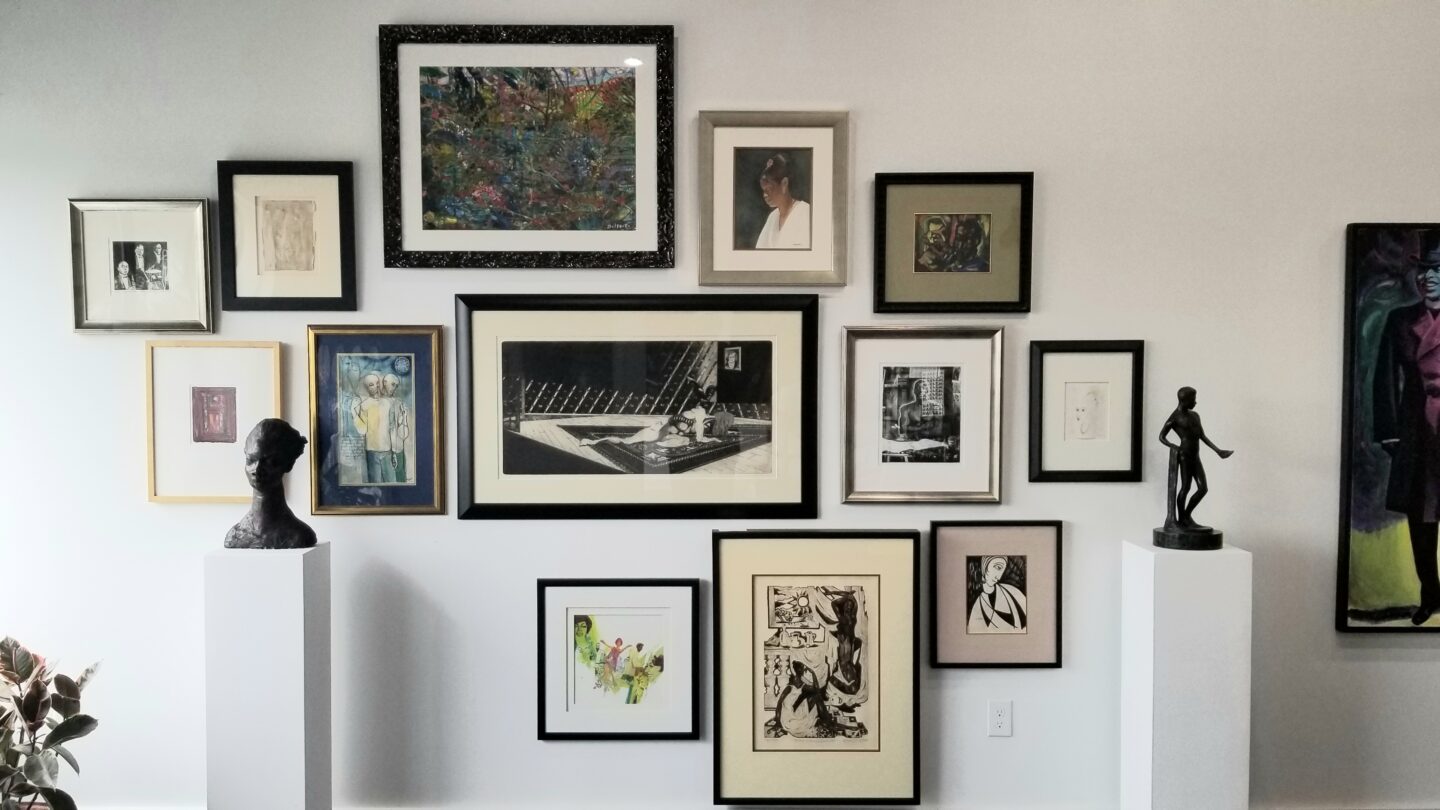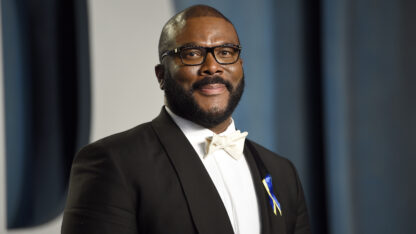The arts organization Black Art in America, or BAIA, was created out of love for Black art, Black community and Black excellence. They’ve elevated the community of Black artists since 2010 with arts advocacy workshops, management services, and exhibitions.
This year, BAIA hit a major landmark with the grand opening of their new dedicated gallery space in East Point. The BAIA gallery showcases art by both renowned and emerging Black artists. Founder, CEO, and visual artist Najee Dorsey joined “City Lights” host Lois Reitzes via Zoom to discuss the new gallery.
Interview highlights:
On the origins of Black Art in America and the BAIA gallery:
“I moved to Atlanta in ’05 to pursue my art full time, but I quickly came to a realization that there was a challenge and a shortage of attention related to the African-American artists and the artists that I was seeing around me doing wonderful works,” Dorsey recounted. “In 2010, sitting around a table of collectors and artists in Chicago one evening… I had that epiphany, that lightbulb that went off and said, ‘Hey, as Obama said, you be the change that you’re looking for.’ And from that point, I just solicited some friends to help assist in creating a platform to document, preserve and promote the contributions of the African-American art community.”
“We built a virtual institution focused to our culture, and it was just a matter of continuing to grow and to create a space where we could showcase the work of these talented artists, both past and present, and build a facility that facilitated community. It was about a gathering space, a space where we could connect with other people and also continue to educate and elevate the works by artists of color… My wife and I, we celebrate 28 years of marriage, and we’ve been completely committed… to enjoying and living with art and eventually getting into collecting and building relationships with collectors and artists and other institutions, and so it’s just the next step.”
Since the Juneteenth grand opening, a community’s warm response:
“It’s really transformed how people see this area, how people see this building, the amount of love and appreciation they have for what we brought to the community,” said Dorsey. “It’s been really special when I see my neighbors come up, and the pride that they have in their eyes, or the bus drivers driving by blowing and waving, and people stopping saying, ‘Hey, man. We love what you did.'”
“When you think about it symbolically, the last of our ancestors finding about their freedom, and yet BAIA, Black Art in America headquarters and gallery space [is located] on the road on Connally, which was a former enslaver in this area. And then where we are today, bringing in high culture, a celebration of who we are and the journey that we’ve made… I think it all just fed into something that was just, it was memorable. And I don’t know, I sometimes don’t have the words. We just kind of put in the work. This is what we do. This is what we love, but we see it in people’s eyes when they come here.”
Art on display inside and outside the gallery:
“When you count all the garden art, there’s probably at least about 40 images, 40 works of art outside. We’ve also got a mural. During the Juneteenth festivities, we brought in Street Art Revolution, which is a group of muralists out of Miami to paint a mural, and we’ve got that mural outside. We’ve got a 1960s GMC Step Van, which I painted and collaged on myself. It’s got an ‘Atlanta’ sign on top. So if we call this a compound or campus, the entire space is just overflowing with an arts experience, from the garden art to the murals on both sides of the properties,” Dorsey said.
“When you first walk in, you’re going to be greeted by a wonderful piece by Lillian Blades entitled ‘Atlanta Sunset.’ To the left, we have this one section that we call our homage to the artists that came before, and there you’re going to find works going all the way back to artists of the Harlem Renaissance, Richmond Barthé, and we have a couple pieces by David Driskell, Louis Delsarte, Ron Adams, Fred Jones, and others. And these are artists that are no longer with us. So part of our mission has always been to document, preserve, promote and make space to educate people about the artists that came before, as well as what’s happening right now in the contemporary.”
The Black Art In America Gallery is open now in East Point, Atlanta. More information is available here.









